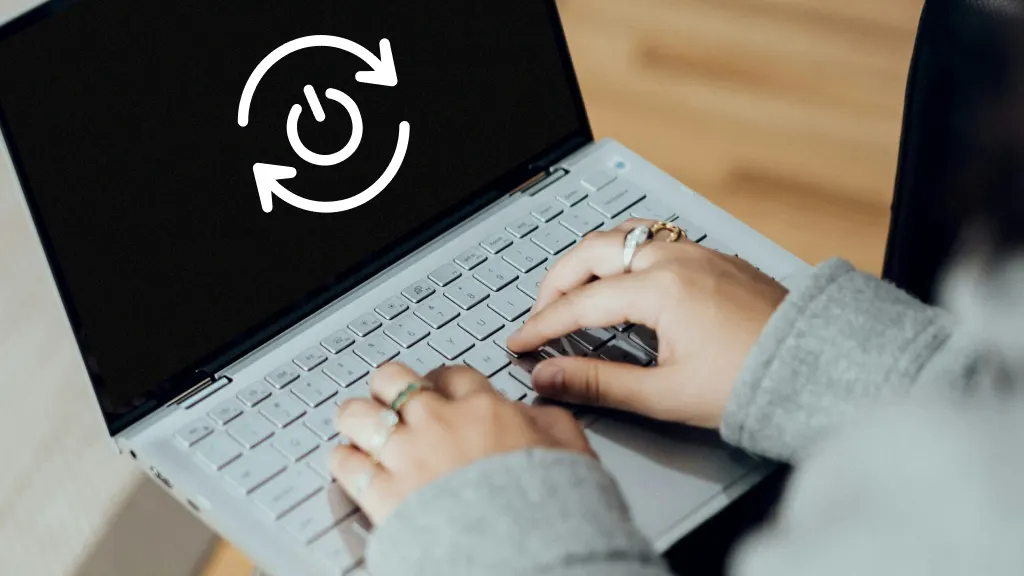How to fix a Dell laptop that keeps restarting

Is your Dell® laptop caught in a frustrating loop of constant restarts? It’s the kind of tech problem that can quickly derail your day when you just need your laptop to work.
Don’t stress. When your tech fails, Asurion tech care shines—turning tech trials into triumphs with quick, expert solutions that keep you connected. Here’s what you can do when your Dell laptop keeps restarting.
Why is my Dell laptop restarting?
If your Dell laptop keeps restarting, there could be several reasons behind it:
- Overheating. If your laptop gets too hot, it might shut down or restart to prevent damage. Make sure your device has good airflow and is free from dust buildup.
- Hardware failure. Damaged components, such as those found in random access memory (RAM) or hard drives, can cause instability and unexpected restarts.
- Loose power connections. Check your power cord and adapter for any signs of wear or damage. Loose or faulty connections can disrupt power and lead to restarts.
- Power supply issues. A broken power supply unit (PSU) or inconsistent power delivery can cause the laptop to restart unexpectedly.
- Malware or virus. Malicious software can interfere with your laptop's normal operation, causing sudden restarts or crashes.
How to fix a Dell laptop that keeps restarting
To resolve this issue, try the following troubleshooting steps:
Use Dell Startup Repair
If your Dell laptop continues to restart, the built-in Startup Repair tool can help fix any software-related issues that might be causing the problem. Startup Repair scans your system for corrupted files and automatically attempts to repair them. Here’s how you can run Startup Repair:
- Hold the Power button for about 10 seconds to turn off your laptop. Then, press the Power button again to turn it back on. When the computer restarts, hold the Power button for another 10 seconds.
- Repeat this process two more times.
- Then, press the Power button again. The device will enter the Windows™ Recovery Environment (WinRE) and initiate the Automatic Repair feature. Startup Repair will analyze your system for issues and automatically attempt to fix any problems it finds.
Once the repair is complete, restart your laptop and check if the restarting issue is resolved.
Restart in Safe Mode
If a software issue is causing the problem, restarting in Safe Mode can help identify the culprit. Restart your laptop in Safe Mode, and see whether it still restarts. If the issue stops, uninstall recent software or drivers to see if one of them is causing the problem.
You may have to put your computer in Safe Mode to access your desktop and continue troubleshooting.
Scan for malware and viruses
Run a full system scan using a trusted antivirus program to detect and remove any malware that might be causing restarts.
Update software and drivers
Outdated software or drivers can lead to glitches and restarts. Make sure your system and drivers are up to date:
- Click the Start menu > Settings > Windows Update.
- Click Check for Updates. If updates are available, Windows will automatically download and install them.
Inspect your laptop for damage that may need repair
Sometimes, external or—unseen internal—damage can cause unexpected restarts or other performance issues. Here's how to check your Dell laptop for any physical damage:
- Examine the exterior. Check your laptop's case for cracks, dents, or other signs of damage. Pay close attention to areas around the hinges, ports, and vents.
- Check the power port. Inspect the power port for any signs of wear or damage. A loose or damaged port can disrupt the power supply and lead to restarts.
- Inspect the cables and connectors. Check the power cord and any other cables connected to your laptop. Look for frayed wires or bent connectors that could cause connectivity issues.
- Check for overheating. Feel around the laptop for any unusually hot areas, which could indicate internal damage or overheating issues. Make sure the vents are clear of dust and debris, and that the laptop is placed on a hard, flat surface to allow for proper ventilation.
If you find any significant damage or are unsure about your laptop's condition, consider consulting an expert.
The Asurion® trademarks and logos are the property of Asurion, LLC. All rights reserved. All other trademarks are the property of their respective owners. Asurion is not affiliated with, sponsored by, or endorsed by any of the respective owners of the other trademarks appearing herein.